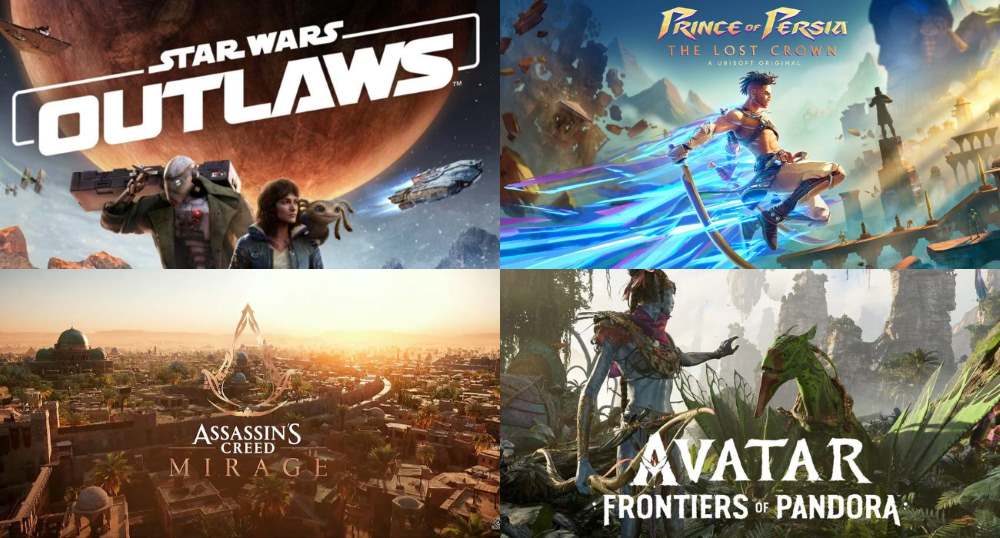Sucker Punch talks about the creative inspiration and design process behind Ghost of Tsushima
You may have already read our review of the upcoming title from Sucker Punch, and if you haven’t, well you’ll be glad to know that we loved the game and every bit of the cinematic experience that came along with it.
Ghost of Tsushima is a visual spectacle, and combined with the world immersion and fluid game mechanics, manages to leave us in awe of what is on our screens for the most part, leaving us staring at the environment during gameplay. Development of the game did not come easy, and we sat down to talk with Jason Connell and Joanna Wang from Sucker Punch to talk about the inspiration and creative process behind Ghost of Tsushima.
Jason Connell is the Art and Creative Director on Ghost of Tsushima. He works on lighting, cinematography, concept direction, and music, all while living in a beanie 99% of the time. Joanna (Zhaojun) Wang is one of the Environment leads on Ghost of Tsushima, and has been with Sucker Punch for 14 years, with experience on Sly Cooper 2, 3, and every inFAMOUS title under her belt.
On Inspiration
Sucker Punch’s journey to deciding on a Samurai Game was not the easiest, and opening up the discussion within the team on what their next game will be was not an easy task to do. “… at some point, Nate and I were talking about how cool it would be to make a Samurai game. You know he’s very inspired by some graphic novels, I love Samurai film. You know, we realized that we were in a pretty unique position because we’re part of Sony, and we have good relationships with the Sony Japan localization team we realized that we actually might be able to pull that off if we kind of pitched it,” Says Connell. “We pitched it and once it got to the whole team. There was really… I don’t remember really anyone that was like, Oh no, we got to push them a little harder like they were all super excited about it and you know we had an amazing first milestone into the project because people just had so much enthusiasm about making this new game.”
There were a lot of challenges during development, and it was mainly born out of the fact that they were located in the US. Connell goes on to say that “We actually involved Sony Japan studio, we gave them the pitch and asked them for their feedback and they were very excited about it and gave us really great feedback about how to adjust the story and the characters, and that basically opened up the doors for a couple of things.”
Throughout the process, Sucker Punch had to hire consultants and historians to give them an understanding at the cultural level which helped them tremendously, even to the point of understanding mannerisms from Feudal Japan. Both Jason and Joanna went on separate trips to Japan which really helped them understand the world they were creating, saying “that was so helpful and I don’t think that we could have made the game without those types of steps along the way.”
On localization
Upon playing the game, you’ll immediately notice that while the game lends itself naturally to playing it with Japanese voice acting, and while the Japanese dub is superb, even employing such names as Kazuya Nakai of One Piece fame, the on screen lip movements are not quite in sync.
“In this game because of the setting, we decided that the localization for Japanese was going to be available to everyone, but the actors that we’ve picked and the people that we’ve worked with… Those are primarily the actors that speak mostly English.” Jason goes on to say that the team did full performance capture, meaning that they not only capture voice but even the slight movements of the face. It was a decision to just have all of the actors speak the same language, hence the visual representation of just English lip movement even though the audio dub is in Japanese.
That’s not to say that the English voice actors are not up to par. If anything, the English VA’s have also done an excellent job and oftentimes, will be the better choice to use in the game to avoid distracting the player between reading the subtitles and the action.
On Game Design and Multiplayer

Ghost of Tsushima is a beautiful open world game that, as with most titles in the same genre, will get repetitive at a certain point. Sucker Punch tries hard to minimize that by striking a good balance that will make the map interesting enough for players to roam around and discover things on their own.
Jason believes in giving players the freedom to choose, making these side trips an optional thing that the game doesn’t force you to do to progress. “… you make it as beautiful and evocative and different and pacing is different, you lean into what’s special about it and so one thing I think that the open world exploration side of Ghost of Tsushima is one of the, I think it’s, personally, this is just my personal gamer opinion, it’s some of my favorite parts of the game.”
Jason also adds that if you don’t feel like its a chore to go around the world, then their work is done. “We want you to stop and just enjoy the music and maybe along the way you know do some of those side pieces of content because doing them also connects you more with the island, it connects you more with some of the people, some of the allies that you meet along the way. And it’s not just about Jin’s personal story is straight through the main missions. It’s about how his presence on the island is felt, and that you know there’s other people here that you can engage with and I think it enriches his story.”
The experience and mechanics of Ghost of Tsushima would possibly work as a multiplayer game but ultimately, Sucker Punch decided to pursue all efforts towards creating a single player experience that they would be proud of. Jason adds that “I really feel like we had a huge plate in front of us. And so we wanted to really focus on making sure that our resources were put towards telling this great story and make the art beautiful and make sure that when people hear the word, you know, Ghost of Tsushima that they think of like this quality immersive experience so really, we’ve just kept our eyes, primarily you know focused on just this this core single player experience.”
On Mythic Tales
Lastly, a part of the game that lends itself to fantastic storytelling are the Mythic Tales, quest lines that are a notch higher than your usual side quests, and will present you with some of the best rewards in the game.
The idea of Mythic Tales stem from the inspiration of giving the players a feeling of something legendary, and “One of the things that were very fascinating about reading about Japanese Samurai is that famous Samurai really existed, they all were just like these amazing legends of people that just did amazing things. And they’re really inspiring,” Jason continues saying that “and so, you know, we felt like this would be an awesome opportunity to tell unique stories that are attached to Tsushima“
Jin Sakai and his journey towards being the “Ghost of Tsushima” is kind of like a Mythic Tale on its own, and it would be something that the players should experience as they play the game and see Jin start from being this kid to growing up and doing something incredible.
Ghost of Tsushima is scheduled to release on July 17 exclusively for the PlayStation 4.






